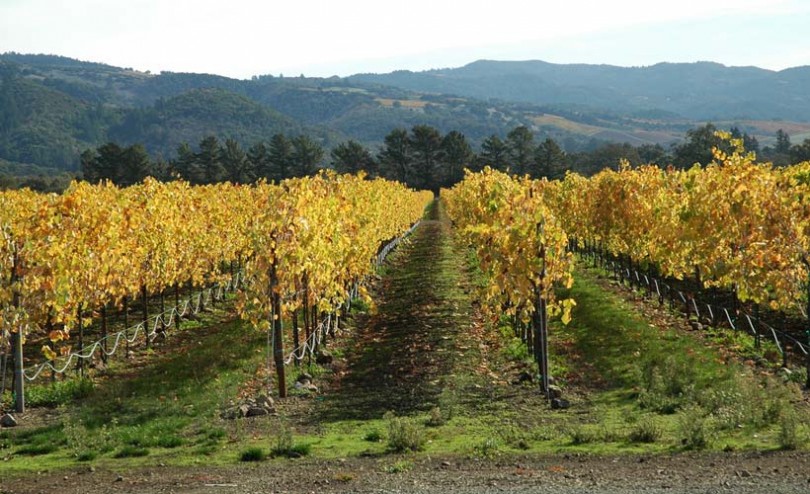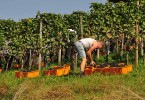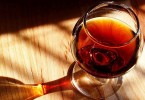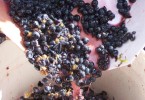The visual appearance and the suspended parts in the wine
The first operation that all the sommeliers make when they taste a wine concerns the visual aspect. You pour the wine into a glass, filling it for about 1/3 and start looking at features such as transparency, clarity, fluidity, color and, in the case of sparkling wines, bubbles.
Transparency is evaluated by looking at an object, such as its own hand, through the wine itself. Looking at a light source, still through the glass containing the wine, one can evaluate its clarity and the presence of any suspended parts.
In general, we can say that while a limited transparency can be due to the very dark color of wine, and hence to be a peculiar feature of the wine itself, in general, the low clarity caused by said suspended parts is a flaw.
The classification of degrees of clarity is generally entrusted to adjectives describing the appearance. When we are in the presence of the highest degree of clarity, the wine is defined as brilliant, followed in descending order by the crystalline wine and thus the “clear” wine. If the effects of suspended parts begin to be evident, wine is seen and defined as “veiled” and, finally, “cloudy”.
The presence of suspended parts does not necessarily mean that the wine is wrong but has undergone insufficient filtration, clarification or incorrect storage when bottled.

Decanting and filtration
During the fermentation process wine is, by its nature, cloudy. The suspended compounds (called pomace) are made up of solid parts of the bunches, tartrates (tartaric acid crystals) and yeasts required for fermentation. These elements tend to fall and settle down to the bottom of the container. They can then be eliminated through grafting and wine filtration, but these operations, if done incorrectly, may leave residues of the compounds mentioned in the wine that we are leaving. There are also smaller “colloidal” parts, such as tannins and polysaccharides, which can be free from these treatments.
The oenological techniques that allow an accurate elimination of these elements consist of decantation with cooling and clarification operations.
In the latter case, precipitation of impurities is favored by elements that are added to wine such as white wine (for red wines) or casein (for white wines). These elements tend to group residues into “flocculi” which as they enlarge and fall to the bottom. Thanks to their size, they are easier to remove from the wine before bottling through the pipes and through the special filters.
Stabilization
However, it is not true that a perfectly cleaned and bottled wine can not subsequently absorb and create parts in suspension. Wine, in fact, is a living organism that, during aging, is susceptible to modification, unless it is perfectly stabilized. These modifications can lead to (again) formation of tartrates, especially potassium bitartrate, when the bottled wine is subjected to low temperatures. This can happen also in young wines.
Aged wines can suffer “breaks” of colorants (oxide or casses), with the formation of pigment polymers (anthocyanins) and tannins that give rise to a patina that remains on the inside glass of the bottle (shirt) and / or deposits on the bottom. In these wines it is an accepted phenomenon and, in a sense, it is an indication that wine may not have undergone stabilizing treatments (but questionable for connoisseurs and purists) such as pasteurisation or addition of sulphites.
For this it is good practice, in the case of aged wines, to close the bottle a little before use and then spread it carefully into a decanter. These procedures, in addition to the wine’s oxygenation, make the suspended parts remain at the bottom of the bottle or decanter.







